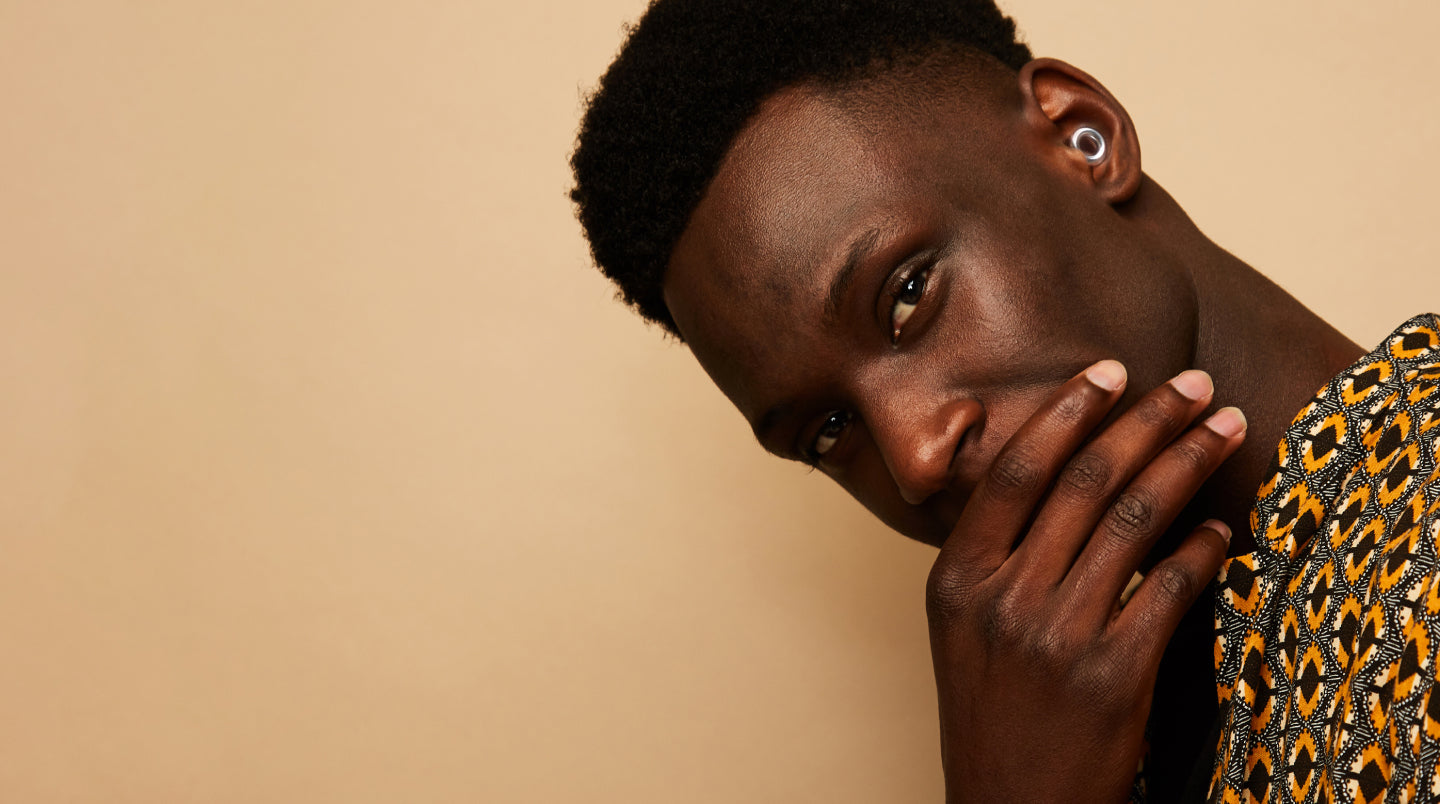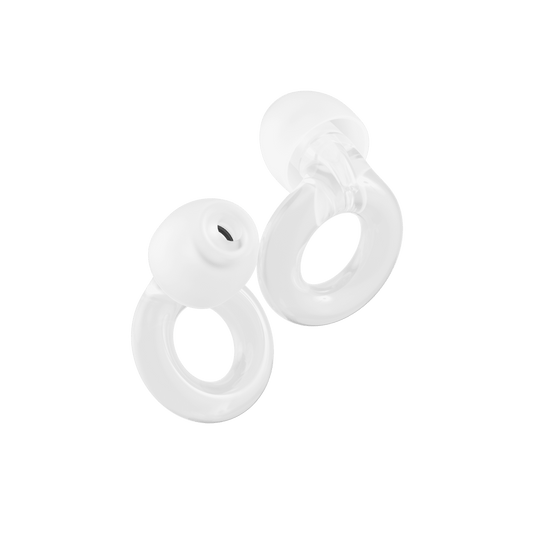Have you ever described a word as being a certain color? Do particular words have a certain taste? Do you feel textures when looking at colors? If so, you could have synesthesia.
Key takeaways:
- Synesthesia is a neurological condition where one sense stimulates another, like seeing colors when hearing music or tasting flavors when hearing words.
- It’s rare (affecting 2-4% of people) and can involve various types, such as grapheme-color synesthesia or auditory-tactile synesthesia.
- For some, synesthesia is a vivid, enjoyable experience, but for others, it can lead to sensory overload and difficulty focusing.
- Earplugs can help manage sensory overload by reducing unwanted auditory input, making environments more comfortable for synesthetes.
Introduction to synesthesia
Synesthesia is a fascinating – and often misunderstood – neurological phenomenon in which one sense stimulates another. That might mean that someone with synesthesia sees color when they listen to music, tastes specific flavors when hearing words, or associate certain colors with the days of the week.
It’s thought that it’s caused by an increased connectivity between different parts of the brain that usually work separately. In synesthetes – people with synesthesia – the brain processes something (such as seeing a letter) and activates two different areas of the brain at once. That could lead to them seeing a certain color when they read a specific letter, for example.
This blending of senses can provide a vivid perspective on the world – but for some, it may also lead to sensory overload, where experiencing different senses at the same time can impact daily life.
Understanding the synesthetic experience
Synesthesia is rare (thought to be experienced by 2 - 4% of the world’s population), but it’s wrong to call it synesthesia disorder – it’s not a disease, nor a disorder. It’s a type of neurodivergence, as the brain processes stimuli in a different way to neurotypical people.
There are several different types of synesthesia, each of which alters sensory perception in unique ways. Some people may find that their synesthesia is intense, while it’s more mild for others. Additionally, some synesthetes experience just one type of synesthesia, while others may experience multiple different types.
Some types of synesthesia include:
- Grapheme-color synesthesia: Grapheme means the smallest part of a written language – in most cases, this is a letter. People with grapheme-color synesthesia, then, often see specific colors with different letters, numbers or symbols.
- Chromesthesia: This type of synesthesia links colors with sounds, meaning that people see colors when they hear sounds. You might see yellow when you hear a piano playing, for example, or associate the popping of corn with a deep red.
- Day-color synesthesia: Some people see or associate certain colors with days of the week.
- Auditory-tactile synesthesia: This type of synesthesia means that when someone hears certain sounds, they feel a tactile sensation, such as pressure, pain, or a change in temperature.
- Lexical-gustatory synesthesia: Causes certain words to have specific flavors, like associating the word “sunshine” with the taste of lemon, or “Saturday” tasting like chocolate.
- Auditory-olfactory synesthesia: Sometimes called sound-smell synesthesia, this is when songs have a smell – such as each musical note having its own smell, or hearing a bell ring and smelling cinnamon.
Does any of this sound familiar? You might want to try our quick synesthesia test to explore whether you have any synesthetic tendencies.


How Loop Earplugs can help with sensory overload
Some people with synesthesia are able to manage it well, and rather than being overwhelming, it simply makes the world feel more vivid and vibrant for them.
For others, though, synesthesia can lead to sensory overload. Noisy or busy environments – like crowded cafes and bustling streets – can be difficult to deal with as sights and sounds trigger other senses. That can lead to sensory overload, which can feel uncomfortable, cause anxiety, or make it difficult to focus. Some synesthetes may also find it stressful, or feel isolated because others find it difficult to understand how they perceive the world.
Earplugs can help to reduce unwanted auditory input, helping to manage sensory overload in people with auditory-triggered synesthesia. Earplugs can reduce the volume, filtering noise to a more manageable level – which can make it more comfortable for synesthetes in noisy environments.
Loop Engage earplugs offer discreet relief from everyday noise for more clear and focused conversations. They’re perfect for taking the edge off, meaning you’re less likely to be overwhelmed by auditory stimulation, helping you to stay more calm and focused when life gets loud. Wear them in social situations or when out and about on noisy streets for everyday noise relief.Get 16dB (SNR) of noise reduction with Loop Engage, or an additional 9 dB (SNR) when you choose Loop Engage Plus.
Loop Experience earplugs offer hearing protection for live concerts and events, offering 17 decibels (SNR) of noise reduction (or an additional 3 dB with Loop Experience Plus), while keeping sound quality clear. They can help to reduce auditory stimuli that may trigger overwhelming sensory experiences, allowing synesthetes to focus on the concert (without shutting out all sounds).
And for when you need earplugs that can do it all? There’s Loop Switch™ 2 for that. Discover convenient noise control across any situation with the new Loop Switch 2 – 1 pair of earplugs, 3 adjustable sound settings, no apps or batteries needed. From work or school to socializing and loud events, these earplugs help you to take control of the volume, whatever the situation – helping synesthetes to reduce the overwhelm and feel more comfortable, anywhere.
Featured collection
-
Experience 2 Plus
SaleRegular price €39.95Regular priceUnit price per
Finding balance with synesthesia and sensory management
All synesthetes experience synesthesia differently. For some, it’s simply a different way of experiencing the world. But for others, it can be overwhelming, causing sensory overload or making it hard to focus.
And, of course, both things can be true – you may sometimes enjoy the benefits of your synesthesia and at other times find it distracting and overwhelming. That’s why it’s essential to have tools in place to help you manage your sensory overload when you need it. Some things to consider include:
- Speaking to a mental health professional: If you do experience sensory overload as a result of synesthesia, it’s a good idea to speak to a professional who can help you to better understand your synesthesia and support you with ways to manage any distress it might cause you.
- Find a community: Synesthesia is rare, which may make you feel isolated. Joining an online community can help.
- Meditation: Meditation or grounding exercises can help reduce stress from sensory experiences.
- Noise-reducing earplugs: Earplugs can help to reduce the noise levels – also helping to reduce your stress levels and enable you to find your focus.
Loop Earplugs are a practical, stylish solution to help you maintain sensory balance. And if they don’t help you to manage your sensory overload? You can return them for any reason within 100 days of receiving your item, even if used.











